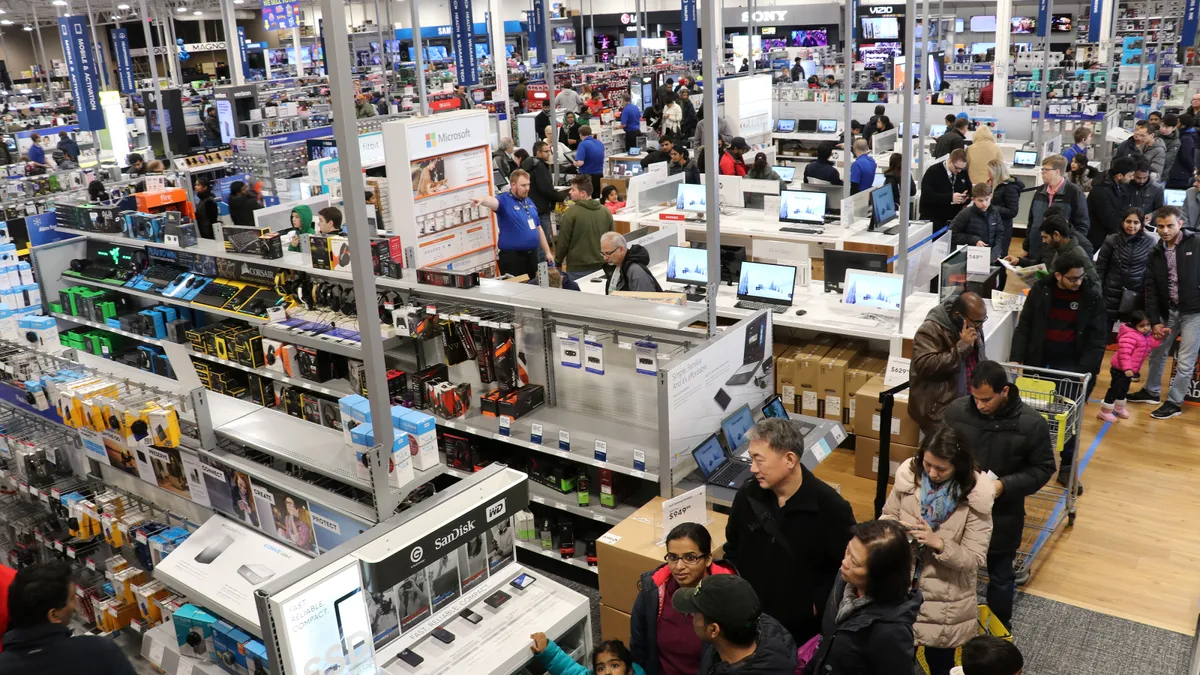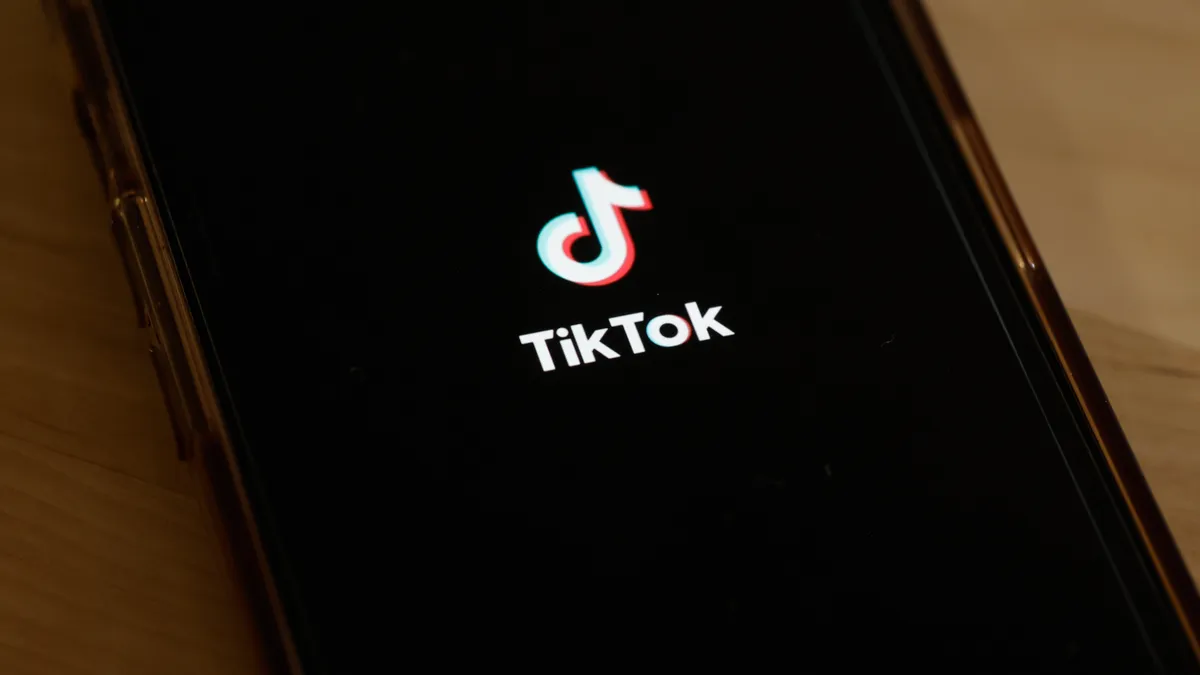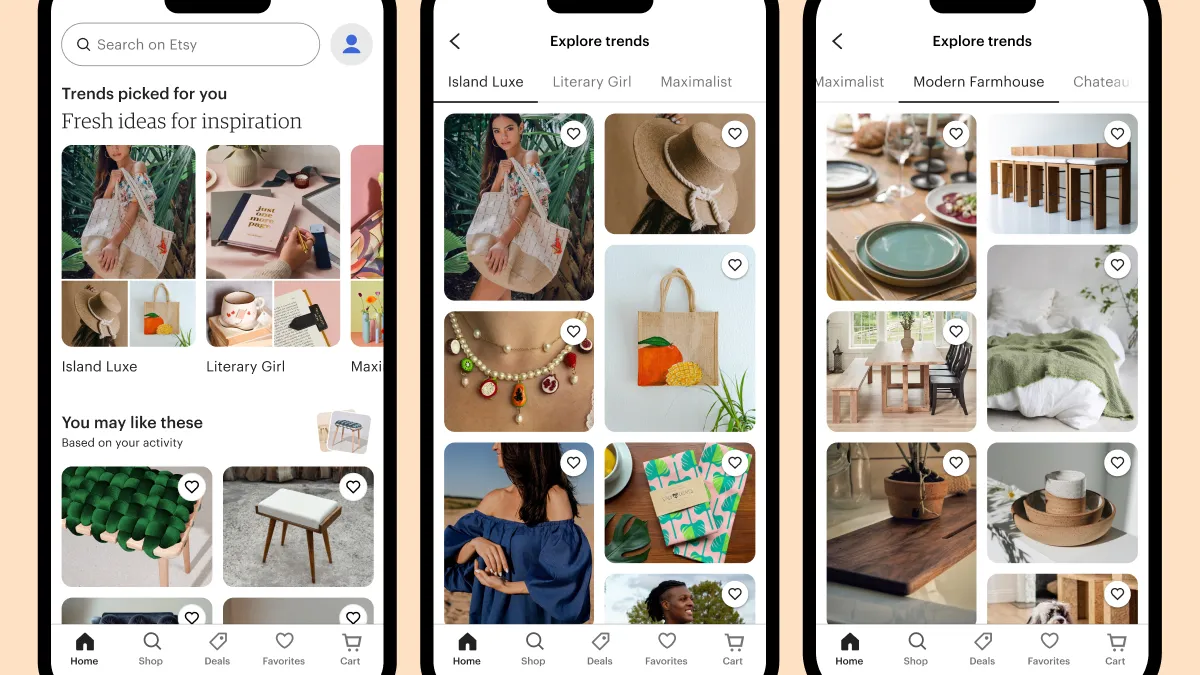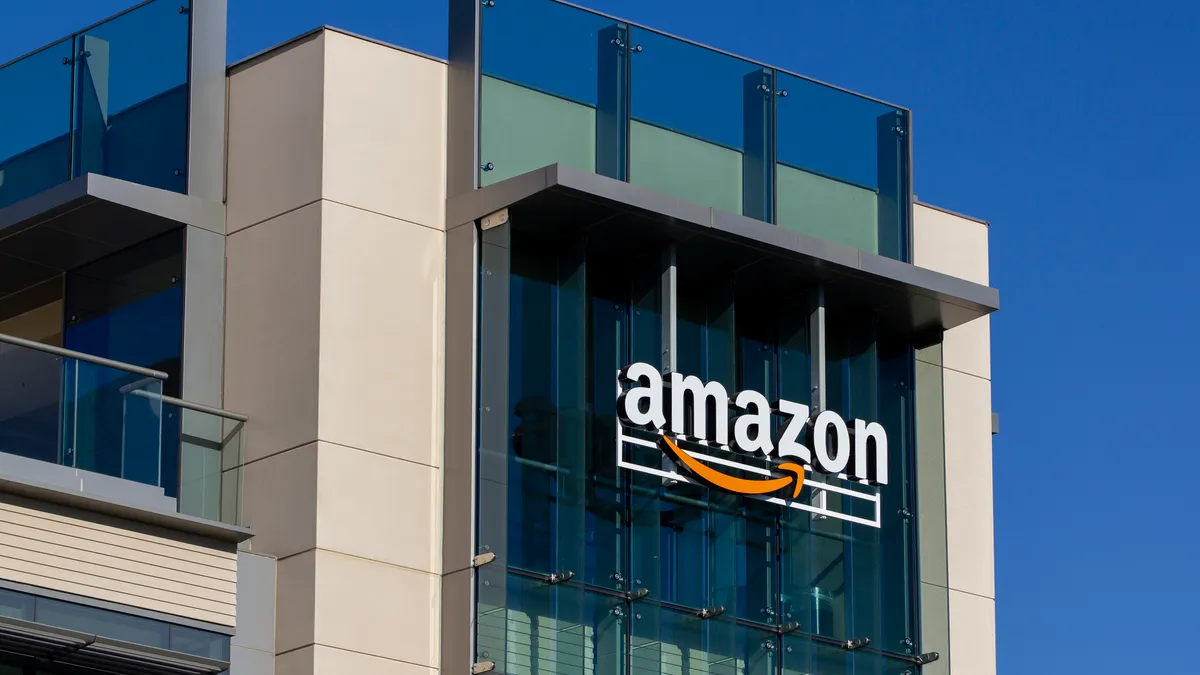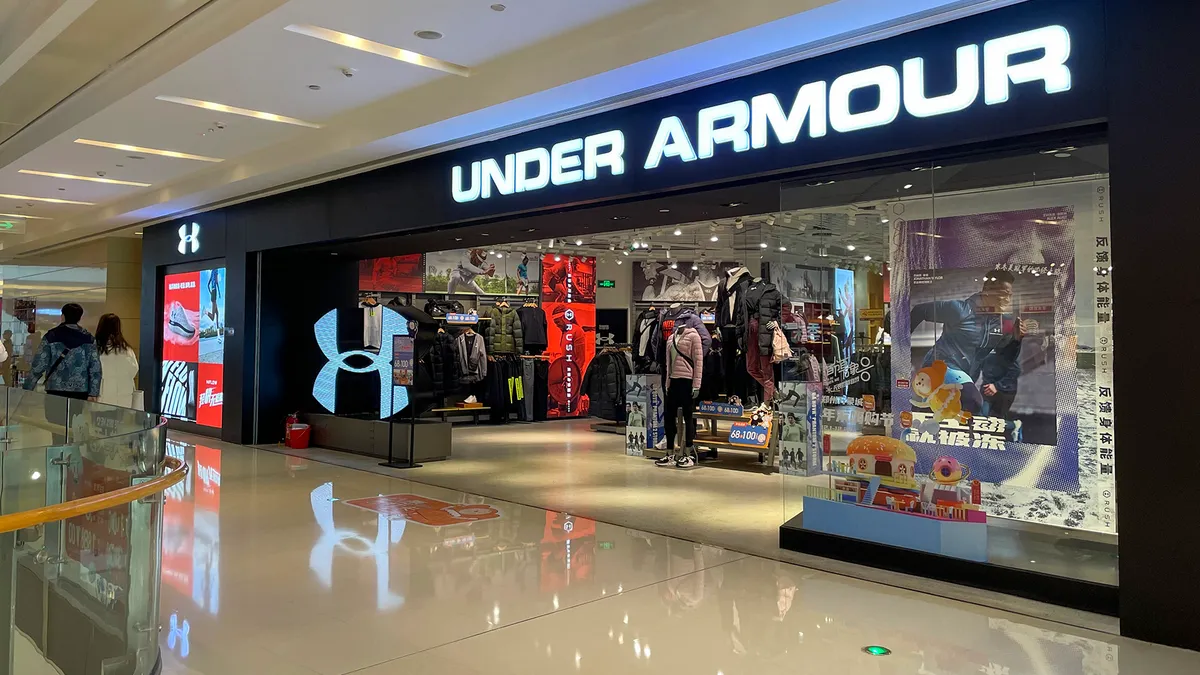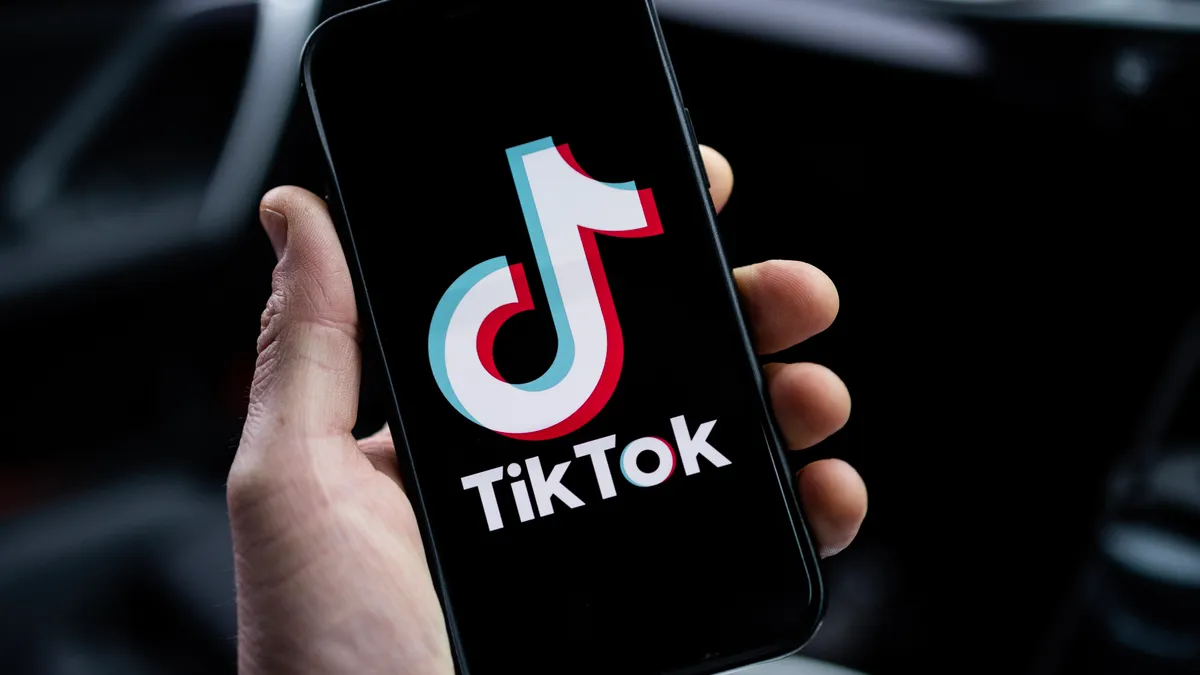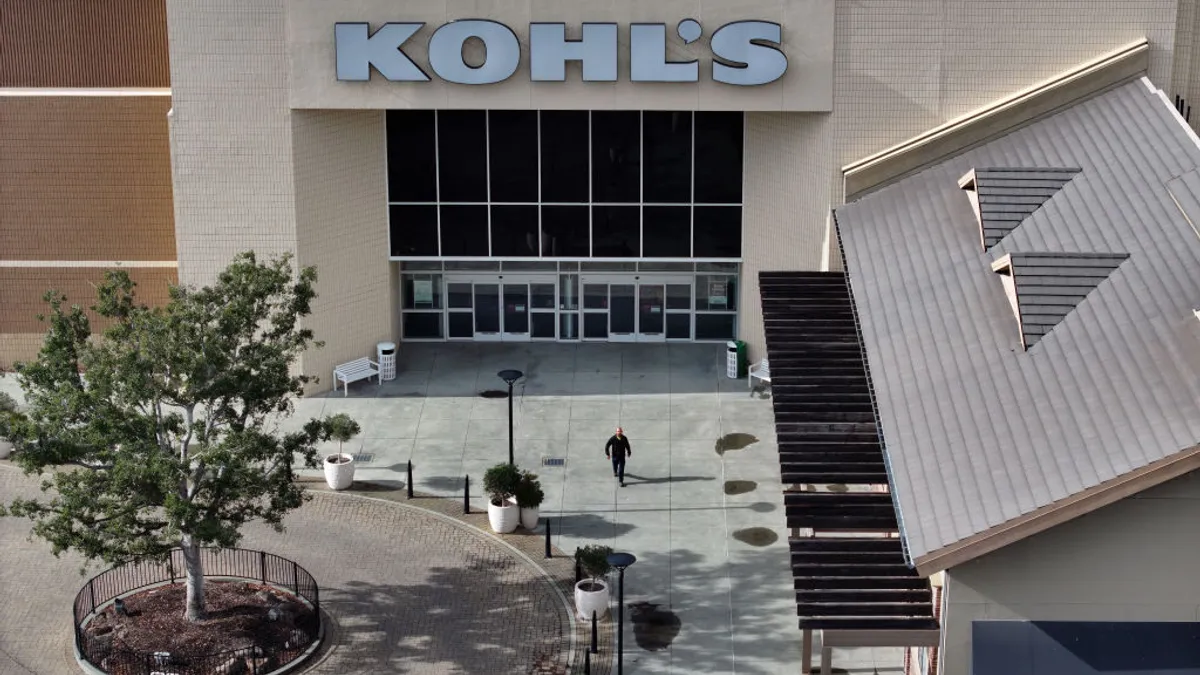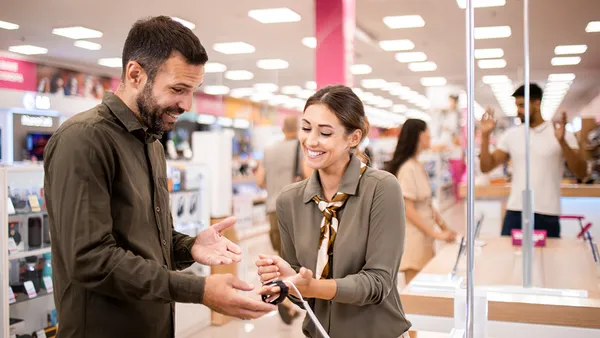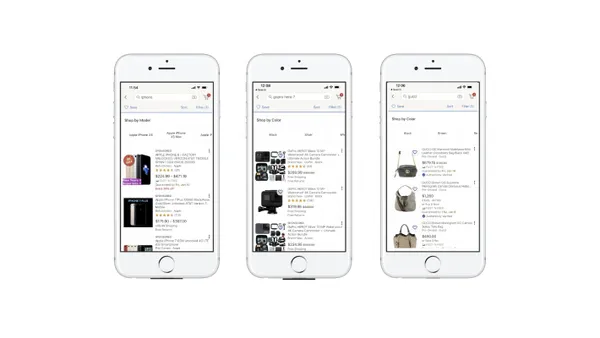For decades, Black Friday has marked the start to the holiday shopping season. It carries with it images of packed and ransacked stores. Lines, crowds, the occasional scrapes and tussles. It's not necessarily for everyone, even in normal times, but it is a tradition for many.
The whole point of those discounts is to pack stores with shoppers. This year, retailers are trying to engineer ways to do just the opposite: keep customers at the curb, or at their homes, or lure them in at different times of the month besides Nov. 27.
Doing so both responds to customers' needs and is the responsible thing to do as the coronavirus outbreak reaches frightening new heights, with more than 100,000 new cases a day at the time of this writing, and with deaths and hospitalizations on the rise.
"The challenge of how to get sales close to typical holiday seasons while still protecting themselves and their customers is a tricky one," Steve Horwitz, an economics professor at Ball State University, said in emailed comments. "No firm can afford to be the site of a superspreading event, so they have every reason to try to keep everyone safe."
Make no mistake, though. Black Friday is still happening this year. According to Numerator, 34% of surveyed consumers planned to shop in stores on Black Friday this year, while 90% planned to shop online.
According to Adobe data, consumer spending began rebounding after the election and is poised to rise during the sales holidays.
"Despite the slowdown in consumer spending, as election results unfolded, there are enough big shopping days ahead to make up lost ground," Taylor Schreiner, director of Adobe Digital Insights, said in emailed comments. "In spite of earlier discounting, the days including Thanksgiving, Black Friday and Cyber Monday have great staying power and are expected to set new records, with growth in the [35% to 40%] range."
As retailers and consumers alike navigate the pandemic, nearly every aspect of Black Friday is being re-engineered this year. These changes may prove to be one-offs — extreme changes made to accommodate an extreme year. Others, customers and retailers might find they like more than the old traditions of flooding into stores in the wee hours of the morning after Thanksgiving.
Here's a look at some of the things that are different this year:
1. Black Friday started online, a while ago
Amazon started the mid-October online sales blitz. After delaying its summer Prime Day event because of the COVID-19 pandemic, the e-commerce giant moved it into the middle of October. Walmart, Target and a host of other retailers — as has become tradition — pegged their own online discount bonanzas to Amazon's Prime Day.
There's a reason for that. About 43% of surveyed consumers said they planned to start holiday shopping before Thanksgiving, up from 33.7% last year, according to JLL's annual holiday report. Walmart said earlier in the fall that 87% of its customers planned to seek out deals earlier this year than in years past, according to its data.
Prime Day and its tag-alongs were a way to capture some of those sales. And it worked. Online sales were up 50% during the week of Oct. 11 to 17, according to Deloitte. The online deals also captured those customers shifting to e-commerce this year due to the pandemic. According to the NPD Group, 51% of surveyed consumers said they will switch most of their gift buying to online because of COVID-19. According to Numerator, October's Prime Day gave Amazon "a jump" on holiday shopping dollars this year.
2. Black Friday sales in stores are going on all month
This year, Walmart created essentially three Black Fridays, each of which starts online multiple days ahead of when they launch in stores. The retail giant called this staggered discounting scheme "Black Friday Deals for Days." Target launched a similar campaign that spread discounts around separate deal events through November.
"By stretching out the holiday shopping season over more than two months, they are engaging in a kind of social distancing through time."

Steve Horwitz
Economics Professor, Ball State University
As with so many things this year, much of the retail world followed the lead of the big players. Kohl's announced earlier deals and emphasized its safety precautions, as did Old Navy and others. Dollar General planned a pre-holiday event for Nov. 13 with discounts across gifting categories at its stores.
The earlier deals are a way to meet consumers in how they plan to shop this year — earlier, away from crowds — while also managing other consumers. The staggered deals are also a way to use carrots to nudge other customers not already planning to spread out their shopping into doing so, rather than pack into stores for Black Friday.
"By stretching out the holiday shopping season over more than two months, they are engaging in a kind of social distancing through time," said Horwitz.
But consumers still think they'll get the best deals on the traditional Black Friday. According to the NPD Group, 20% of consumers said they expected the best deals on Black Friday, the most of any other holiday sales event, with Prime Day a close contender at 18%. The number of those that plan to start their holiday shopping on Black Friday was 14%, down slightly from last year, according to NPD.
3. Black Friday creep has been reversed, for now
After more than three decades of being open on Thanksgiving, Walmart opted to close for the holiday this year. So did Target, for the first time in years. So did Kohl's, Old Navy, Macy's and others.
Walmart framed the decision around its employees, in what has been an unbelievably stressful year for frontline retail employees amid the pandemic. "We know this has been a trying year, and our associates have stepped up," John Furner, president and CEO of Walmart U.S., said in a statement when the decision was announced. "We hope they will enjoy a special Thanksgiving Day at home with their loved ones."
It marks the reversal, or at least a one-year speed bump, in a trend toward opening on Thanksgiving, which most consumers have said they don't even want. (But obviously some consumers have been shopping on Thanksgiving, otherwise retailers would have kept the doors closed all along.) So far this year, it's mainly grocers, drugstores and dollar stores that are open on the holiday, according to BestBlackFriday.com.
Retailers planning to close are still encouraging consumers to shop on Thanksgiving — online. And many retailers have highlighted their in-store and curbside pickup options so purchases that are made on Thanksgiving can be picked up on Black Friday.
4. Black Friday, curbside style
Speaking of curbside pickup, that channel for sales has exploded this year. Across the board, retailers have been highlighting curbside as an option for customers wary of stores this fall.
The blending of channels started long ago, but the pandemic has drastically accelerated store pickup growth in 2020. Sales through Target's same-day services, including its Drive Up and Order Pick Up options, grew by more than 270% in a single quarter this year. Others have seen similar growth in digital and omnichannel sales as well.
For its tiered Black Friday events, Walmart offered, as a new feature, contactless curbside pickup for purchases made online.
According to JLL survey data, just under 24% of consumers plan to order online and pick up curbside for holiday purchases this year, a category that the firm didn't measure last year, it being "not a huge trend" in 2019. Another 29% plan to order online and pick up in stores, up from 23.5% last year.
5. Safety = Black Friday success
Despite the pandemic, consumers still plan to shop in stores during Black Friday and the holiday season more generally. According to JLL survey data, 49.4% said they plan to shop in stores during the season, down about two and a half percentage points from last year but still a sizable chunk. Yet that doesn't mean consumers aren't concerned about safety.
Some 66% of consumers said they are more likely to visit stores with strict health precautions in place, like mask requirements, occupancy limits, contact barriers and one-way aisles, according to survey data released by the International Council of Shopping Centers in October. Meanwhile, more than 55% of surveyed customers said COVID-19 topped their list of concerns about holiday shopping, and 88% said pandemic-related safety procedures are important for in-store shopping, according to a PwC report.
Retailers that can address those concerns and make consumers feel safe are poised to win the holiday and the overall shopping season. As one example, Target, which has made huge sales gains throughout the pandemic, has added new contactless payment options ahead of Black Friday. It also added a feature to its website notifying customers if there are lines at stores due to occupancy limits Target put in place this April.



